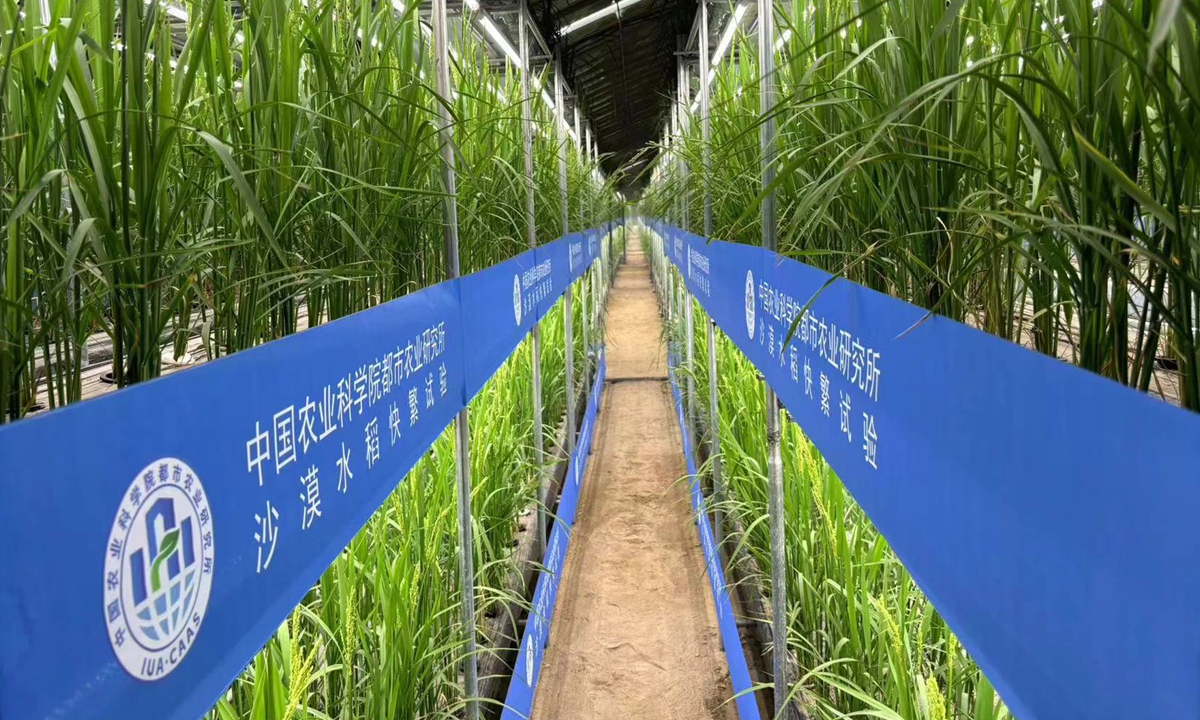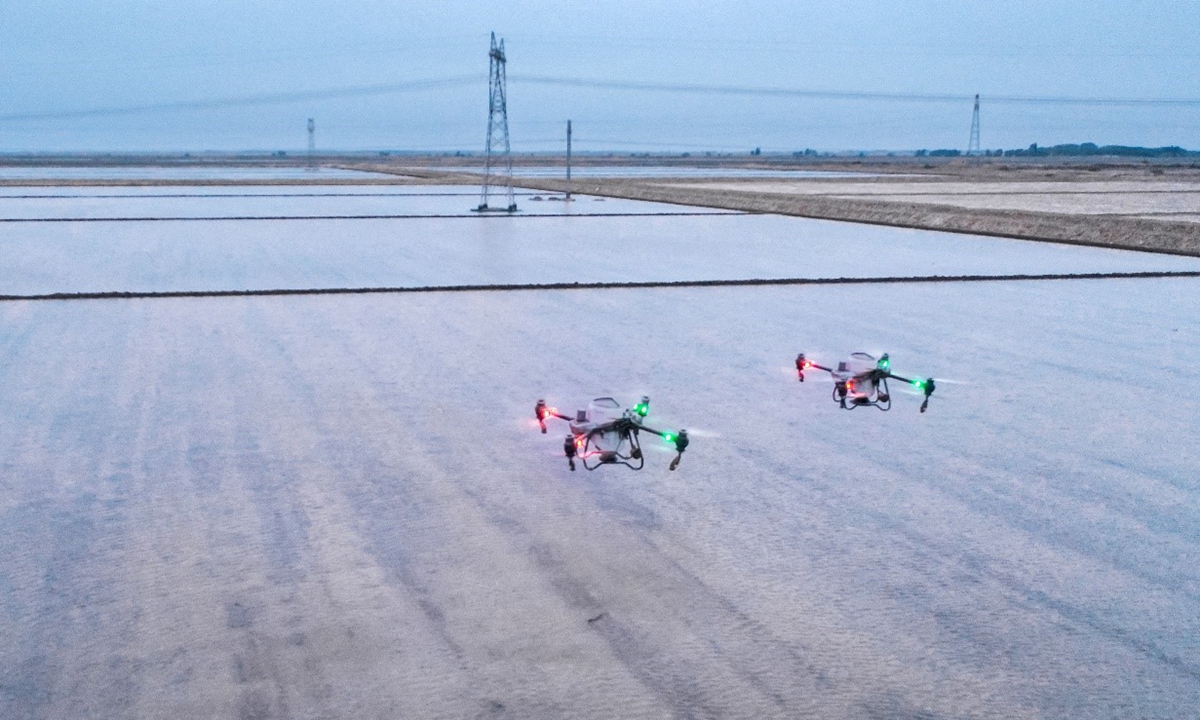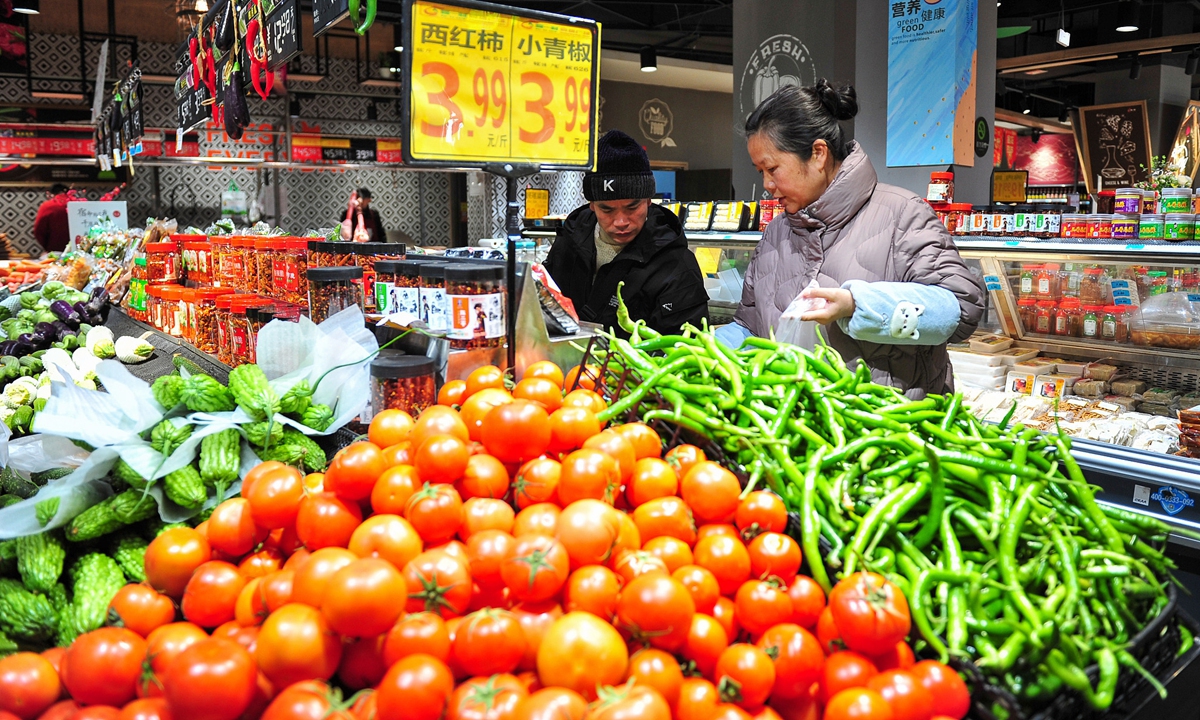
Fast breeding rice cultivated in a desert greenhouse in Hotan Prefecture, Northwest China's Xinjiang Uygur Autonomous Region, under the trial period. Photo: Courtesy of the Institute of Urban Agriculture, Chinese Academy of Agricultural Sciences
Chinese scientists have successfully developed fast breeding rice in desert greenhouses in Hotan Prefecture, Northwest China's Xinjiang Uygur Autonomous Region, for the first time under the trial period, making the rice grow from planting to harvest in just 75 days.
The tech provides support for the country to carry out year-round cultivation and fast breeding of crops in desert areas, according to the Institute of Urban Agriculture (IUA), Chinese Academy of Agricultural Sciences.
The technology was developed by the IUA's chief scientist Yang Qichang and his research team after five years of research. The team leverages rich solar resources in desert areas, implementing measures such as multi-layer vertical soilless cultivation and artificial light source control, making rice grow from planting to harvest in just 75 days. The tech reduces the rice's growth cycle by around 40 percent compared to rice cultivated in traditional fields, according to the Chengdu-based IUA.
"We used the local new rice for this cultivation by taking fast breeding tech. The seedling cultivation took 15 days. In February, we planted the rice seedlings in the soilless cultivation tanks. The entire production cycle is 60 days by far," Wang Sen, the IUA's researcher, also one member of the research team, told the Global Times on Monday.
The fast breeding of rice in the greenhouses in Hotan adopts vertical soilless cultivation technology, providing crops with good production conditions such as light, temperature, water, air, and fertilizer under intelligent LED supplementary lighting from artificial light sources, according to Wang.
Within the facility, the temperature, humidity, light intensity, and other conditions can always be controlled precisely. However, the costs of energy, operation, and construction are always high. As a result, the experiment utilizes the abundant light and heat resources in Taklimakan Desert to establish a desert greenhouse plant that significantly reduces costs, according to the IUA.
It's meaningful to "inspire more scientific research" in the field, to encourage scientists to explore various solutions to "ensure national breeding and food security," Wang noted.
The research team has also been exploring key technologies for the fast breeding of staple crops such as soybeans, corn, and wheat, as well as oilseed crops and cotton in the desert greenhouses in Hotan.
The research institution has been making efforts in exploring the tech of building vertical unmanned greenhouse during recent years. In December 2023, a 10-meter-high unmanned greenhouse rack, the tallest of its kind in the world, was built by the IUA in Chengdu, Southwest China's Sichuan Province. Its cultivation procedures are completely automated, including sowing, thinning, harvesting and packaging, according to media reports.



